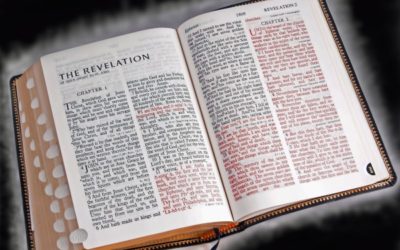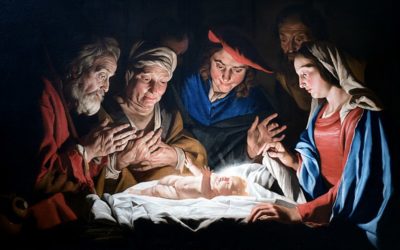Because of persecution and other difficulties in Ohio, the Prophet Joseph Smith and other Church members were compelled in early 1838 to flee to Missouri, which became the Church’s new headquarters. There Joseph Smith received several revelations between April 26 and July 8 that dealt with Church administrative matters ranging from the official name of the Church to the definition of tithing and how Church expenditures were to be authorized.
Doctrine and Covenants 115
With the Church’s headquarters now established in Missouri, it was time to resolve several pressing needs. One was to decide on the formal name for the Church. When it was first organized in 1830, it was known as the Church of Christ (Doctrine and Covenants 20:1, 38, 61, 68, 70‒71, 80, 81). But the name did not seem sufficiently distinctive to some. In 1834, a conference of the Church in Kirtland decided that rebranding was necessary and voted to change the name to the Church of the Latter Day Saints. That, of course, led to discussions among Church members who remembered the verse that is now 3 Nephi 27:8 in the Book of Mormon in which the Savior asks his New World disciples, “How be it my church save it be called in my name?”
On April 26, 1838, at Far West, Missouri, Joseph Smith received a revelation from the Lord, now section 115, that resolved the debate. In it, the Lord directed, “Thus shall my church be called in the last days, even The Church of Jesus Christ of Latter-day Saints” (verse 4). (Early texts give the punctuation and capitalization as “the Church of Jesus Christ of Latter Day Saints,” which later leaders standardized to the way it currently reads in section 115.)
In addition, since most faithful Saints had left Kirtland and the House of the Lord located there, the need for a temple in Missouri again arose. The dedicated lot in Independence was not a possible location for the temple because of the constant threat of violence there. In section 115, the Lord said, “Let the city, Far West, be a holy and consecrated land unto me; and it shall be called most holy, for the ground upon which thou standest is holy. Therefore, I command you to build a house unto me, for the gathering of my saints, that they may worship me.” (Verses 7‒8).
The Lord gave very specific instructions about building the Far West temple. The Saints were to start building it on July 4 of that year, and exactly one year from the date of the revelation on April 26, 1839, they were to “recommence laying the foundation of my house” (verse 11). The commandment was a very specific one, with at least two notable elements.
First is the idea that they would not be working on it steadily from July 4, 1838, to April 26, 1839—a period of nine months. Why not? The Saints did not know it at the time of the revelation, but in July and August of 1838, tensions between the Saints and those who did not like them would escalate into what has come to be called the Mormon-Missouri War of 1838, making work on the temple virtually impossible.
The second notable element is that they would “recommence laying the foundation” of the temple on April 26, 1839. This date gave the Church’s enemies particular delight because by driving the Saints from the area, they thought they could prevent this prophecy from being fulfilled, which in their minds would mean Joseph Smith was not a prophet. (They apparently did not consider that the Lord would hold them accountable for obstructing His work.)
As it turned out, by that date, most of the Saints had been driven not only from the area but from the state of Missouri under an order issued by the state’s governor to exterminate, or drive out, the Saints. But a party led by Brigham Young returned in the night to the temple site on April 26, 1839, to show their willingness to see the prophecy fulfilled despite the personal danger it posed to them.
They were not, of course, able to finish the temple at Far West, and today the site remains a sacred and peaceful place for people to visit. As the Lord later explained in Doctrine and Covenants 124:49, whenever He commands his people to do something “and their enemies come upon them and hinder them from performing that work, behold it behooveth me to require that work no more.” The ones who must account for the temple not being built will be those who prevented it.
For more on the history of this revelation, click here.
Doctrine and Covenants 116
In section 115, the Lord directed that Far West be a place for “the gathering of my saints; and also that other places should be appointed for stakes in the regions round about, as they shall be manifested unto my servant Joseph, from time to time” (verses 17‒18). One such place manifested to Joseph was Adam-ondi-Ahman, a place known locally as Spring Hill in Daviess County, Missouri. The explanation for the new name appears in section 116, dated May 19, 1838: “Spring Hill is named by the Lord Adam-ondi-Ahman, because, said he, it is the place where Adam shall come to visit his people, or the Ancient of Days shall sit, as spoken of by Daniel the prophet” (verse 1).
Today the Church owns the site, and visitors there often feel a sense of peace as they contemplate what happened there and what is prophesied to happen there in the future.
For more on the history of this revelation, click here.
Doctrine and Covenants 117
The move from Ohio to Missouri required paying off debts and transitioning members from the old to the new Church headquarters. Section 117 of the Doctrine and Covenants, also given at Far West on July 8, 1838, provided instructions for three key leaders, William Marks, Newel K. Whitney, and Oliver Granger. It encouraged them not to covet material things but to serve the Lord, for which they would be blessed.
For more on the history of this section, click here.
Doctrine and Covenants 118
Another revelation given at Far West on July 8 provided instructions to the members of the Twelve. Since some of the Twelve had apostatized in Kirtland, the Lord directed that their places be filled (verse 1). The four new apostles named by the Lord were John Taylor, John E. Page, Wilford Woodruff, and Willard Richards (verse 6). The revelation also directed the Twelve to go on another mission “over the great waters” (verse 4), where they would have tremendous success and help bring new converts to the Church at a difficult time. They were to “take leave of my saints in the city of Far West, on the twenty-sixth day of April next, on the building-spot of my house, saith the Lord” (verse 5). When Brigham Young and others returned under cover of night on April 26, 1839 (as described above under section 115), they fulfilled this prophecy as well.
For more on the history of this revelation, click here.
Doctrine and Covenants 119
The Saints’ initial efforts to live the law of consecration were halting. To bring more regularity to Church finances at a time of great need, the Lord gave Joseph Smith on July 8, 1838, the revelation that is now section 119 of the Doctrine and Covenants. It directs the Saints to live the law of tithing.
For more on the history of this section, click here.
Doctrine and Covenants 120
On July 8, 1838, the Lord gave a revelation to the Prophet Joseph Smith, now Doctrine and Covenants 120, in which He designated that tithing “shall be disposed of by a council, composed of the First Presidency of my Church, and of the bishop and his council, and by my high council” (verse 1). As the Church’s organizational structure changed over time, the Council on the Disposition of the Tithes came to be “composed of the First Presidency, the Quorum of the Twelve Apostles, and the Presiding Bishopric” (Church Auditing Department Report, 2020).
This council meets regularly to authorize Church expenditures. Each year in April general conference, the managing director of the Church’s Auditing Department issues a report to the First Presidency confirming “that, in all material respects, contributions received, expenditures made, and assets of the Church for the year . . . have been recorded and administered in accordance with approved Church budgets, policies, and accounting practices” (Church Auditing Department Report, 2020).
On the change in Church organization from 1838 to 1844, read Ecclesiastical Organizational Charts, 1830–1839 and Ecclesiastical Officers and Church Appointees, 1839–1844.
For more on the history of this revelation, click here.
Credit for the image at top of the page: George Edward Anderson photograph of Far West Temple site, public domain, copied from https://history.churchofjesuschrist.org/media/historic-sites-far-west-temple-site-anderson?lang=eng#1.



